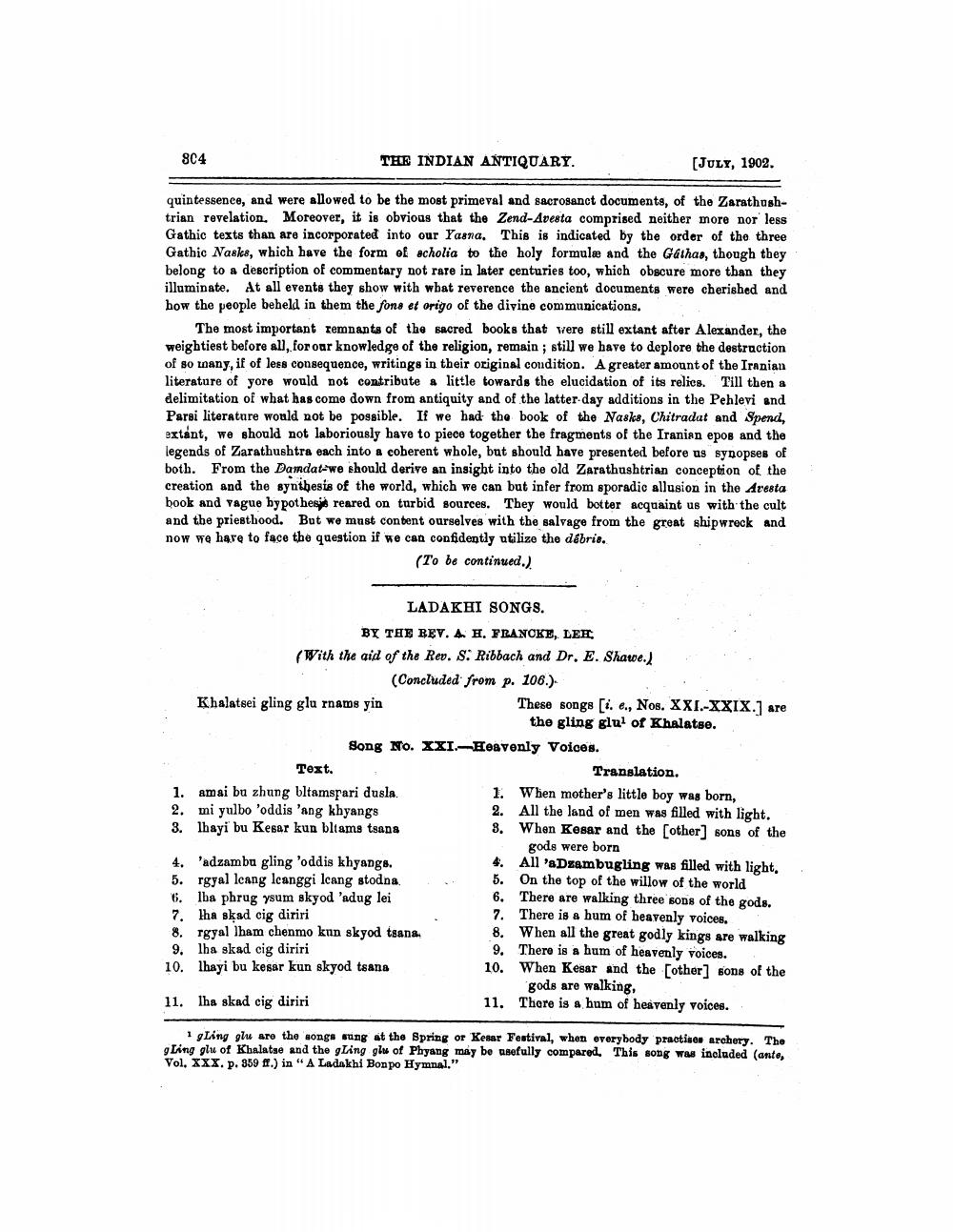________________
804
THE INDIAN ANTIQUARY.
[JULY, 1902.
quintessence, and were allowed to be the most primeval and sacrosanct documents, of the Zarathushtrian revelation. Moreover, it is obvious that the Zend-Avesta comprised neither more nor less Gathic texts than are incorporated into our Fasna. This is indicated by the order of the three Gathic Nasks, which have the form of scholia to the holy formule and the Gáthas, though they belong to a description of commentary not rare in later centuries too, which obscure more than they illuminate. At all events they show with what reverence the ancient documents were cherished and how the people beheld in them the fons et origo of the divine communications.
The most important remnants of the sacred books that were still extant after Alexander, the weightiest before all, for our knowledge of the religion, remain; still we have to deplore the destruction of so many, if of less consequence, writings in their original condition. A greater amount of the Iranian literature of yore would not contribute a little towards the elucidation of its relics. Till then a delimitation of what has come down from antiquity and of the latter-day additions in the Pehlevi and Parsi literature would not be possible. If we had the book of the Nasks, Chitradut and Spend, extant, we should not laboriously have to piece together the fragments of the Iranian epos and the legends of Zarathushtra each into a coherent whole, but should have presented before us synopses of both. From the Damdat we should derive an insight into the old Zarathushtrian conception of the creation and the synthesis of the world, which we can but infer from sporadic allusion in the Aresta book and vague bypothesis reared on turbid sources. They would better acquaint us with the cult and the priesthood. But we must content ourselves with the salvage from the great shipwreck and now we have to face the question if we can confidently utilize the débris.
(To be continued.).
LADAKHI SONGS.
BY THE REV. A. H. FRANCKE, LEH.
(With the aid of the Rev. S. Ribbach and Dr. E. Shawe.) (Concluded from p. 106.).
Khalatsei gling glu rnams yin
Song No. XXI-Heavenly Voices.
Text.
1. amai bu zhung bltamspari dusla. 2. mi yulbo 'oddis 'ang khyangs 3. lhayi bu Kesar kun bltams tsana
4. 'adzambu gling 'oddis khyangs.
5. rgyal leang leanggi leang stodna.
6. lha phrug ysum skyod 'adug lei
7. lha skad cig diriri
Translation.
1. When mother's little boy was born,
All the land of men was filled with light. When Kesar and the [other] sons of the gods were born
2.
3.
These songs [i. e., Nos. XXI.-XXIX.] are the gling glu1 of Khalatse.
4.
5.
6.
7.
8.
9.
10.
All 'aDzambugling was filled with light,
On the top of the willow of the world
There are walking three sons of the gods.
There is a hum of heavenly voices.
When all the great godly kings are walking
There is a hum of heavenly voices.
When Kesar and the [other] sons of the gods are walking,
8. rgyal lham chenmo kun skyod tsana.
9. lha skad cig diriri
10. lhayi bu kesar kun skyod tsana
11. Iha skad cig diriri
1 gling glu are the songs sung at the Spring or Kesar Festival, when everybody practises archery. The gLing glu of Khalatse and the gLing glu of Phyang may be usefully compared. This song was included (ante, Vol. XXX. p. 359 ff.) in "A Ladakhi Bonpo Hymnal."
11. There is a hum of heavenly voices.




